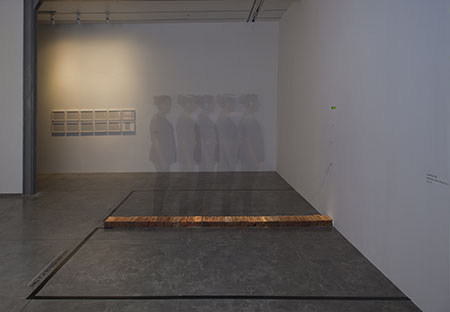Shilpa Gupta

When fundamental reforms in the 1990s carried India towards a free market economy, its isolation from the world economy began to wane and its global influence grew. Ultimately, this helped the country shape globalization over the course of the following decade. Simple statistics tell the story: while India’s annual economic rate of growth since independence had been steady at one percent, between 1999 and 2008 the annual economic growth rates were 9.6 percent and 8.9 percent in Gujarat and Delhi, respectively, signalling the effects of India’s free market economy. If that degree of prosperity did not hold throughout the country, it nevertheless created the new India we think of today. Not coincidentally, these reforms also coincided with the emergence of a new generation of Indian artists, Shilpa Gupta prominent amongst them. Looking back across her career, beginning with her first solo exhibition in 2001 in New Zealand, it seems evident that her work developed in step with globalization’s priorities – and its effects. At the same time, she remained very much self-aware as an Indian woman navigating the hope for and healthy scepticism of massive change in India and throughout the world.
Featuring ten works spanning from 2008 to 2012, Gupta’s solo exhibition at Chemould Prescott Road, entitled ‘Someone Else’, served as a valuable overview. The themes of globalization appeared at every turn. In Untitled (2009) she employed a motion flapboard, generally used for displaying airline and train arrivals and departures, to flip through a kind of prose poem that criss-crosses religious differences, post-colonialism, generational conflicts, opening borders, international identities and diversity, inclusion and connectivity via telecommunications – the A-list of the big-picture optimism on which globalism campaigned. But then, near the end of all of the rhetoric, she spells out a sardonic caveat that reads, ‘My memory excludes me’, raising a pointed question: how much change – social, economic, political or otherwise – have we really seen, person to person, in a country with a population of 1.22 billion? It’s a fair question, and this sort of pragmatism Gupta holds up to globalization is most relieving and refreshing. She is not just going through the post-colonial checklist; her eyes are wide open.
In Speaking Wall, an installation from 2010, the visitor dons a headset, stepping up onto a row of bricks that dead-end into the wall. Then something unexpected takes place: a voice in the headset tells the visitor where and when to move along the bricks; the audience member’s identity is arbitrarily shifted to performer. He or she is brought forward (‘Step a bit closer, closer ... ,’ says the wall) and then backed away. To make this all work, Gupta has embedded a sensor in the wall so that it knows where the ‘performer’ is when issuing its commands. This becomes a poignant performance as the voice begins speaking about shifting borders that render the identities of both human and object ambiguous. The voice of the wall tells a story about a border that was drawn in the dirt and exposed to the wind, thereby shifting a few centimetres. Such arbitrary borders are meaningless, of course, which makes the performer’s identity meaningless, too. ‘So its fine,’ the wall says, ‘so I no longer need your ID, no longer need to know your name, your religion, your sex and the place you came from.’ There is no need to know your identity when borders across landscapes are constantly being re-drawn by nature or, more likely, by humankind. Gupta asks once again: how much has really changed?
Most of Gupta’s exhibition sustained a sombre mood or a poetic register, as in Singing Cloud (2009), her amorphous throng of 4,000 microphones – turned into speakers – suspended from the ceiling. With deftly lyrical language, she touches on fear and prejudice, greed and power. But it is in Threat (2009) that she becomes defiant. The work comprises a wall assembled of brick-sized bars of brown soap, each engraved with the word ‘THREAT’. Inviting her audience to take a brick home, Gupta transforms us into performers once again, with the result that this wall – her ‘border’ – is constantly in a state of global dispersal. On the one hand, borders in and of themselves foster benevolent national and cultural identities; but closed borders or defended borders are threats to the ideals of the free exchange of ideas and values, individuality, dissidence and upward mobility. Gupta turns each brick of soap into a symbol that places the onus on each of us returning home across our own borders, to wash away the threats to a truly globalized society, culture and economy. Glancing at my own memento mori THREAT brick resting on my desk, I can’t help but wonder how effective or responsible we will ever be.














